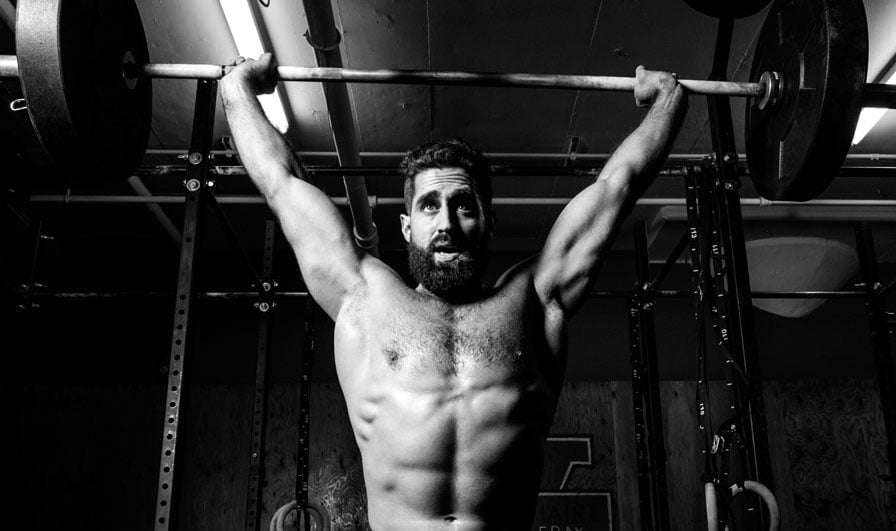Knowledge
That Thing They Call “Functional Bodybuilding”
Articles, Crossfit, Muscle gain

It’s been over 10 years now since CrossFit captured the fitness industry worldwide. Some trainers saw it as provocative because of the high intensity and the complex movements executed, and maybe you are against it as well because you believe your neighbor should go through a specific rehab program for his tight hips before going through any high intensity program. You’re right. But one thing you cannot take away from Crossfit is the fact that it has helped so many people to get off their couch and move. What’s interesting these days is to see the evolution of the training that has been taking place. That person who started to move 10 years ago is probably training differently now. Bodybuilding is very evolutive.
Back then, education about proper and specific warm was lacking. The training process was all about being constantly varied and wasn’t so much scientifically-based: Aerobic training was understood as « metcon » or « circuit training ». Mobility? What’s that? Today, things have changed
While you can gather data on performance each year, you can now also see how many years competitive and all-star athletes are staying in the game, and how their training is changing. You can also identify some recurrent injuries and how people in your own gym are adapting to your program if this is the case. Things have changed and the training process has as well. If you are a trainer whose background is all about muscle function, multi-plane and corrective work, you should probably smile right now, because all of these are now starting to be popular in any well-balanced CrossFit program aimed at performance. You can find all of these aspects in what some people call « functional bodybuilding » . Here’s why you should use it in your program.
1) Developing your mind-muscle connections
It’s not normal to see a woman who is in the top 15 of her regional qualifier squat double her bodyweight but be unable to perform bodyweight Bulgarian split squats without losing balance. The more I train CrossFit athletes, the more I can see their lack of experience in traditional bodybuilding and their lack of mind-muscle connection. As opposed to bodybuilders, who learn to « squeeze » and connect with the working muscles, Crossfitters are just moving. They lift a bar with a technique which is much more movement-based as opposed to understanding which muscle to work with and when. Ask them what they « feel » when the bar is at hips level on their snatch? Good question. If you’re looking at maximizing strength or power, you should start with an optimal development of their mind-muscle connections. Don’t be afraid to use banded leg curls with a sumo deadlift if you want to make your athletes « feel their hammies » or « lat pull down » with strict pull ups if you want to make them « feel their lats ». That’s only one of many ways.
2) Use multi-plane exercises for structural balance
The most powerful tool to educate and influence Crossfit training has always been to look at what the best were doing. So, if the best were running and doing kettlebell swings before squatting, that was what you had to do. Crossfitters follow trends, they follow superstars. The best thing that happened for us as trainers over the last year is Marcus Filly posting his daily routine on Instagram because, you know…Crossfitters will start to do it. Good thing he is using a lot of anti-rotational core work and working on the transverse plane a lot. Those will help give you a more solid structural balance and prevent injuries from movements you are not accustomed to like grabbing a heavy sandbag from the floor (don’t train it like this, start from the base). My athletes now tease me about doing stuff the same way Marcus does. As I don’t have a big ego, I prefer to tell them we share the same mindset.
3 ) Correct problems
I remember training Erika Letendre (Michele Letendre’s twin sister) on the road to the 2014 regionals. She had problems with her lower back, core and posterior chain engagement. We used specific corrective exercises like a barbell press in a lunge position, Zercher Bulgarian split squats and a lot of isometric holds. Some people told me that’s wasn’t CrossFit. Of course, it wasn’t CrossFit! The goal was to correct imbalances and help her to upgrade her strength potential for future cycles. By the way, she finished 8th at the regionals. So, before you push your athletes’ limits, make sure to evaluate and correct all the postural and muscle problems. You’ll be able to get your athlete on another level instead of trying to upgrade their squat in 3 different cycles. Sometimes, the solution is closer than you think.
— KEH